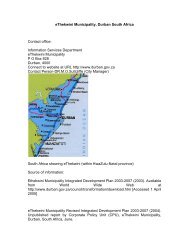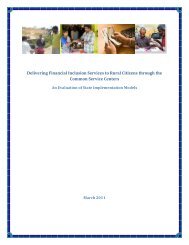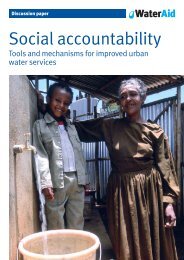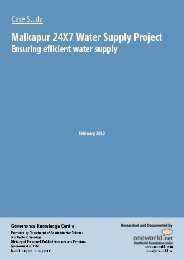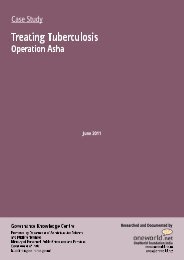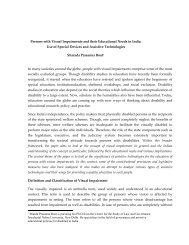EMRI model - Indiagovernance.gov.in
EMRI model - Indiagovernance.gov.in
EMRI model - Indiagovernance.gov.in
Create successful ePaper yourself
Turn your PDF publications into a flip-book with our unique Google optimized e-Paper software.
Study of Emergency Response Service (<strong>EMRI</strong> Scheme)every rural call with<strong>in</strong> 40 m<strong>in</strong>utes is be<strong>in</strong>g achieved. Detailed discussion shows a muchmore varied picture. What is worth not<strong>in</strong>g is that there is an objective, documented andverifiable system <strong>in</strong> place for measur<strong>in</strong>g the time taken from the moment of receiv<strong>in</strong>g thecall, to the moment of reach<strong>in</strong>g the patient, and the time taken to deliver the patient tothe facility. This system is well monitored and supervised. And this <strong>in</strong>formation is actedupon regularly to improve performance through a system of detailed analytic reviews. Onrequest, <strong>EMRI</strong> provided us with figures that showed the range of time taken, as also thecases where there was considerable delay. A common reason for delays was that theambulance was busy attend<strong>in</strong>g another. Once the ambulance reaches an average of 8to 10 trips per day, delays become almost <strong>in</strong>variable - necessitat<strong>in</strong>g the addition ofanother ambulance <strong>in</strong> the same area. We note that Andhra Pradesh wasreported/perceived to have achieved 100% coverage with 502 ambulances, and then afurther 150 ambulances were added and justified as necessary to take it to full coverageand now a further 455 ambulances are proposed- aga<strong>in</strong> for reach<strong>in</strong>g 100% coverage. Amore detailed and nuanced understand<strong>in</strong>g after a discussion of this aspect with <strong>EMRI</strong>shows that at 502 ambulances the coverage was about 85%, ris<strong>in</strong>g to 94% with 150more ambulances and to 99% - a 4% <strong>in</strong>crease <strong>in</strong> coverage with an addition of 455ambulances. Not only does this show that the last mile <strong>in</strong> terms of geographic coveragerequires a disproportionately high <strong>in</strong>crease of ambulances, but also that <strong>in</strong> areas alreadycovered density of ambulances would also have to rise with <strong>in</strong>creased utilisation- so asto guarantee quality- <strong>in</strong> terms of promptness.e. Hospital l<strong>in</strong>kages: One of the key functions that <strong>EMRI</strong> performs is to recruit privatehospitals who would participate <strong>in</strong> the ERS and this would imply cashless service for thefirst 24-hours till the patient is stabilized. For this purpose <strong>EMRI</strong> has met with largenumbers of private hospitals and signed MOUs with them. These MOUs play a limitedrole now - merely to formalise an understand<strong>in</strong>g that the hospital would not refuseadmission if a patient is brought to it. But there is no process of accreditation orcertification and even <strong>in</strong>formation about the variety of services available is limited. Wedo know that the percentage of referrals to private sector is 35% <strong>in</strong> Andhra Pradesh.Rajasthan, be<strong>in</strong>g <strong>in</strong> their 1 st year of operations, is still almost fully dependent on<strong>gov</strong>ernment hospitals and private hospitals are <strong>in</strong> the process of be<strong>in</strong>g engaged by<strong>EMRI</strong> Rajasthan. <strong>EMRI</strong> states that the choice of hospital to be taken to, lies only with thepatient. In case the patient is unconscious or not able to exercise choice, then the choiceis assumed to be the nearest public hospital. There is an <strong>EMRI</strong> plan to gather moredetails of services available <strong>in</strong> each hospital, but it is not fully functional. There are<strong>in</strong>stances of private hospitals, even those with MOUs, refus<strong>in</strong>g admission, but these areexceptions and are reported as “usually resolved by <strong>in</strong>teractions”. There is however norecord or track of quality of care on arrival and on refusals to care. Clearly it is not the<strong>EMRI</strong>s responsibility, if it turns out that the services are not available and the patient hasto be transferred to another facility. What are the numbers that need to move out aga<strong>in</strong>National Health Systems Resource Centre (NHSRC)20




